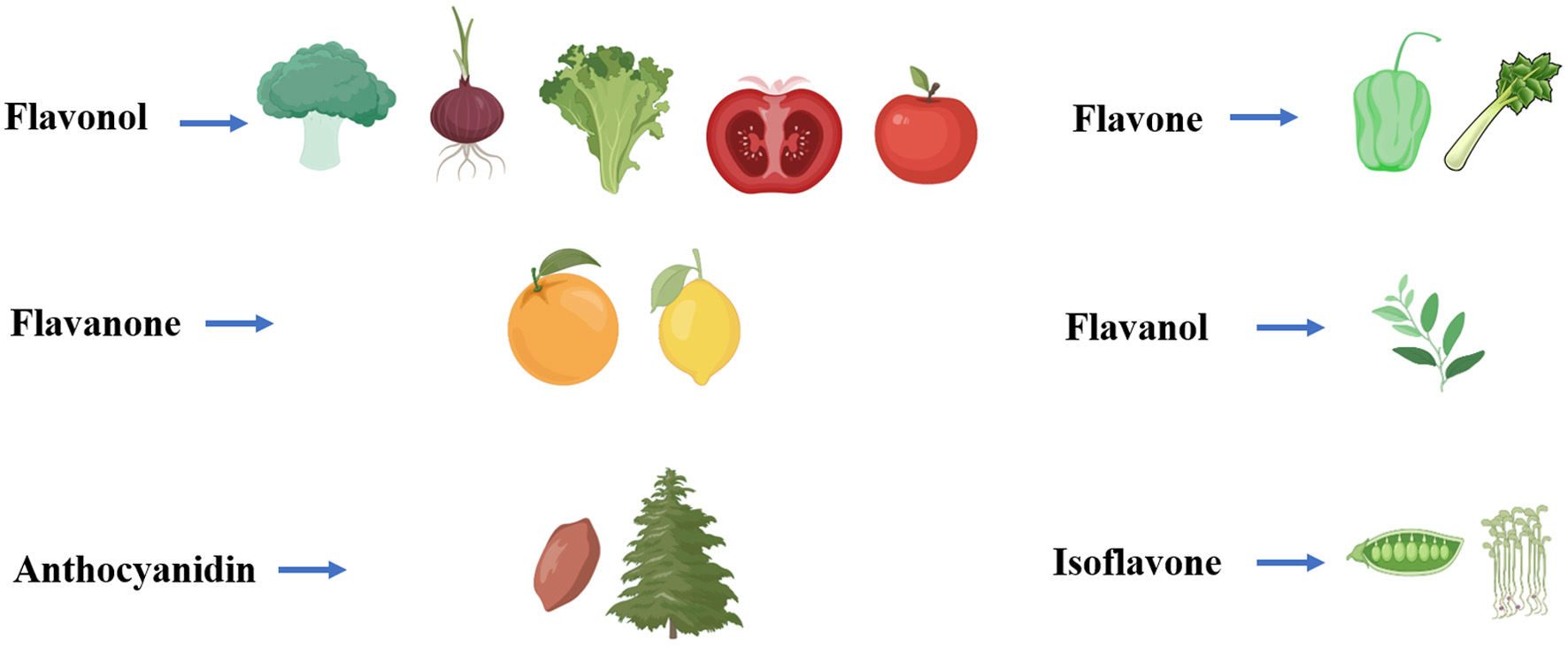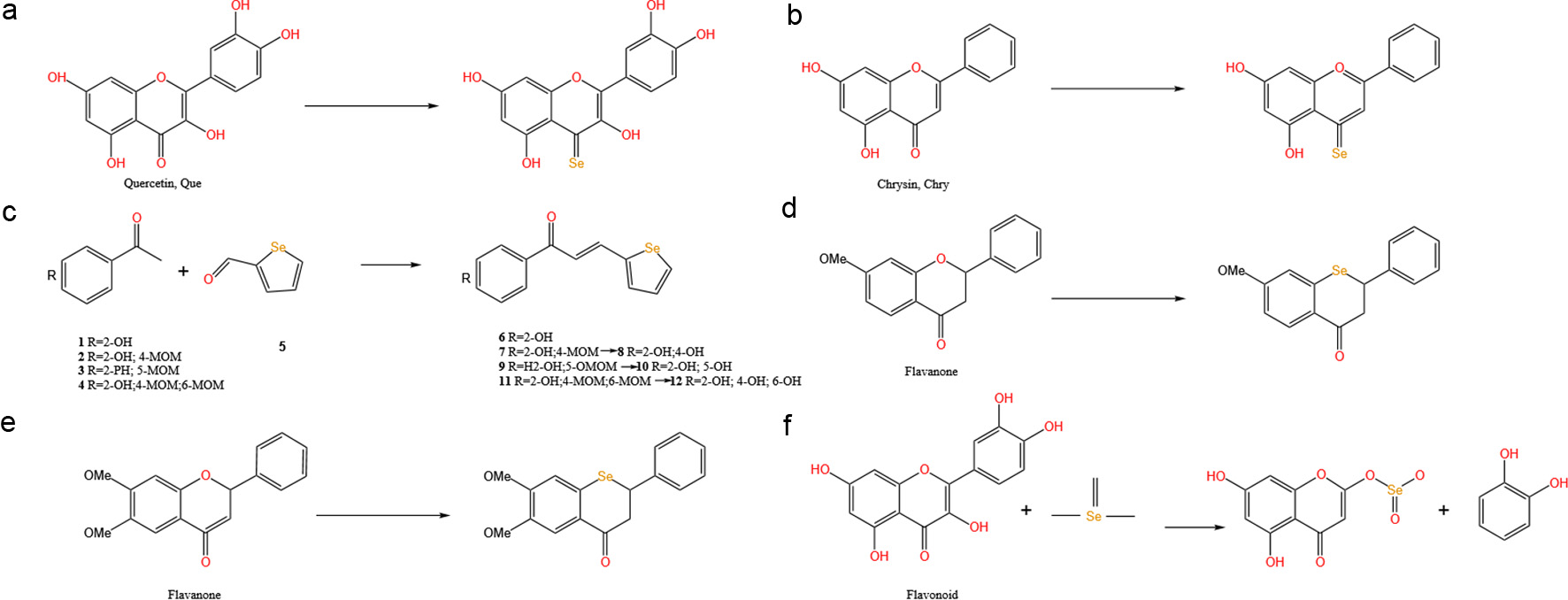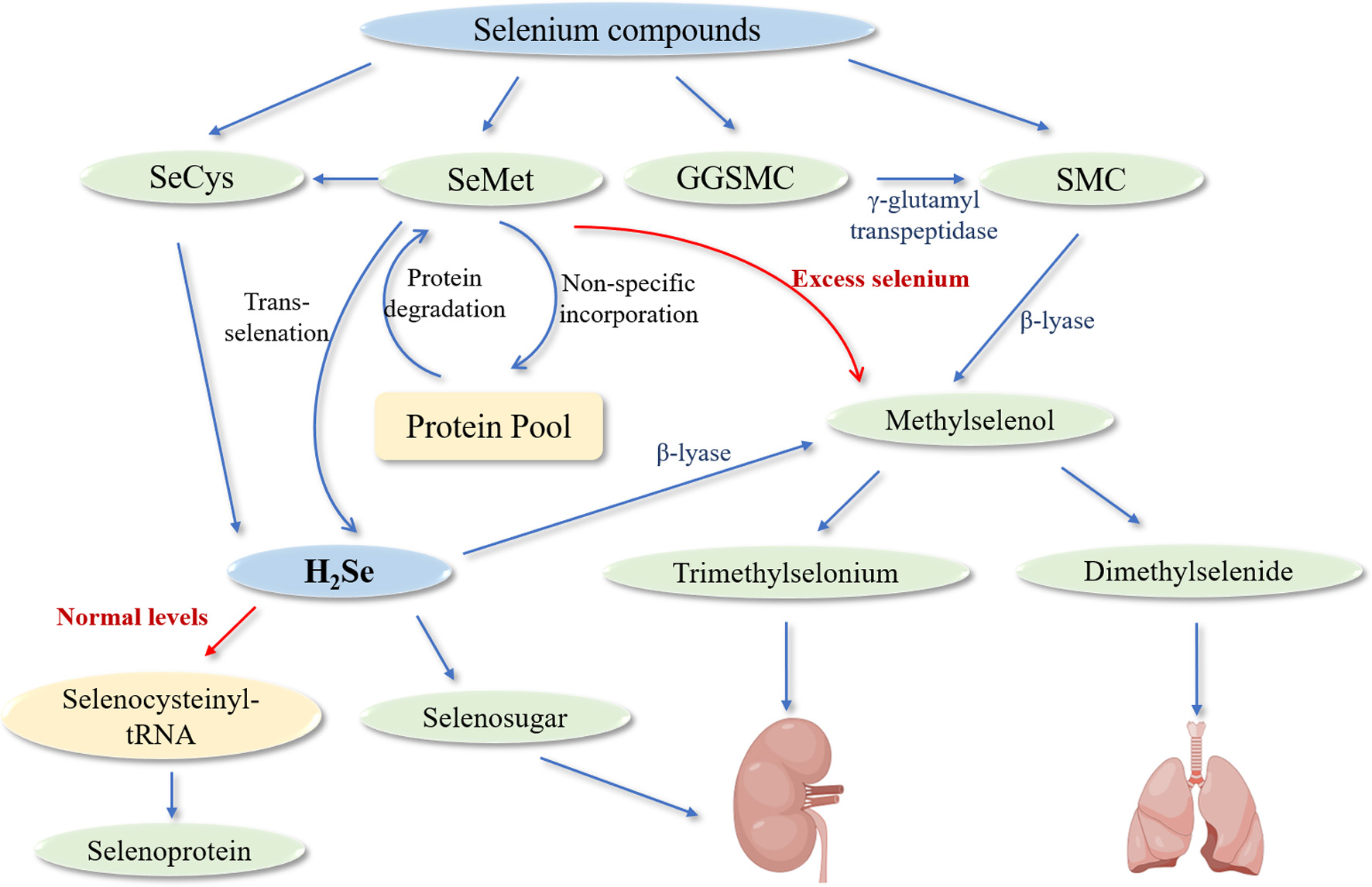| Anti-inflammatory and Antioxidant Activities | Se-enriched rice grass extract (flavone glycosides, tricin, swertisin); Selenoauraptene; Se-enriched mung bean fermentation broth | (1) Inhibition of NF-κβ pathway and subsequent reduction of iNOS and COX-2 expression; (2) GPx-mimetic activity enhancing cellular redox statu; (3) Direct radical scavenging properties; (4) Modulation of MAPK and PI3K-Akt signaling pathways; (5) Suppression of inflammatory mediator production |
| Neuroprotective Effects | Se-Rutin; Se-EGCG; Se-enriched tea extracts; Resveratrol-selenium nanoparticles (RSV-SeNPs) | (1) Upregulation of Nrf2/HO-1 pathway protecting against oxidative stress; (2) Prevention of β-amyloid aggregation and fibril formation; (3) Modulation of Sirt1/miRNA-134/GSK3β signaling axis; (4) Reduction of neuroinflammation; (5) Restoration of gut microbiota homeostasis; (6) Preservation of mitochondrial function |
| Regulation of Glucose and Lipid Metabolism | Mulberry-kudzu-Se nanoparticles (MPE-SeNPs); Luteolin-loaded Se nanoparticles (LT-SeNPs); Rutin-Se nanoparticles | (1) Enhancement of insulin sensitivity; (2) Improvement of intestinal permeability and nutrient transport.; (3) Modulation of Nrf2/ARE pathway and inhibition of NLRP3 inflammasome; (4) Upregulation of Nrf-2/HO-1 and downregulation of Jak-2/Stat3 signaling; (5) Protection against diabetes-induced organ damage |
| Antitumor Effects | SeNPs-quercetin; Se-enriched tea extract; SeNPs-apigenin; SePQue; SeChry; ACM-SSe-BE (Se-baicalein nanoparticles) | (1) Modulation of p53/β-catenin/cyclin D axis; (2) Induction of G2/M phase cell cycle arrest; (3) Regulation of apoptotic proteins (Bcl-2/Bax/Caspase-3); (4) TrxR inhibition; (5) Disruption of mitochondrial membrane potential; (6) Modulation of multiple metabolic pathways (glycolysis, TCA cycle); (7) Systematic reduction of SOD activity with concurrent increase in ROS levels |
| Impact on Bone Metabolism | Silibinin-selenium (SSe) | (1) Reduction of oxidative stress in bone microenvironment; (2) Upregulation of osteogenic proteins (SIRT1, SOD2, RUNX-2, OC); (3) Enhancement of bone mineralization; (4) Promotion of bone regeneration |


